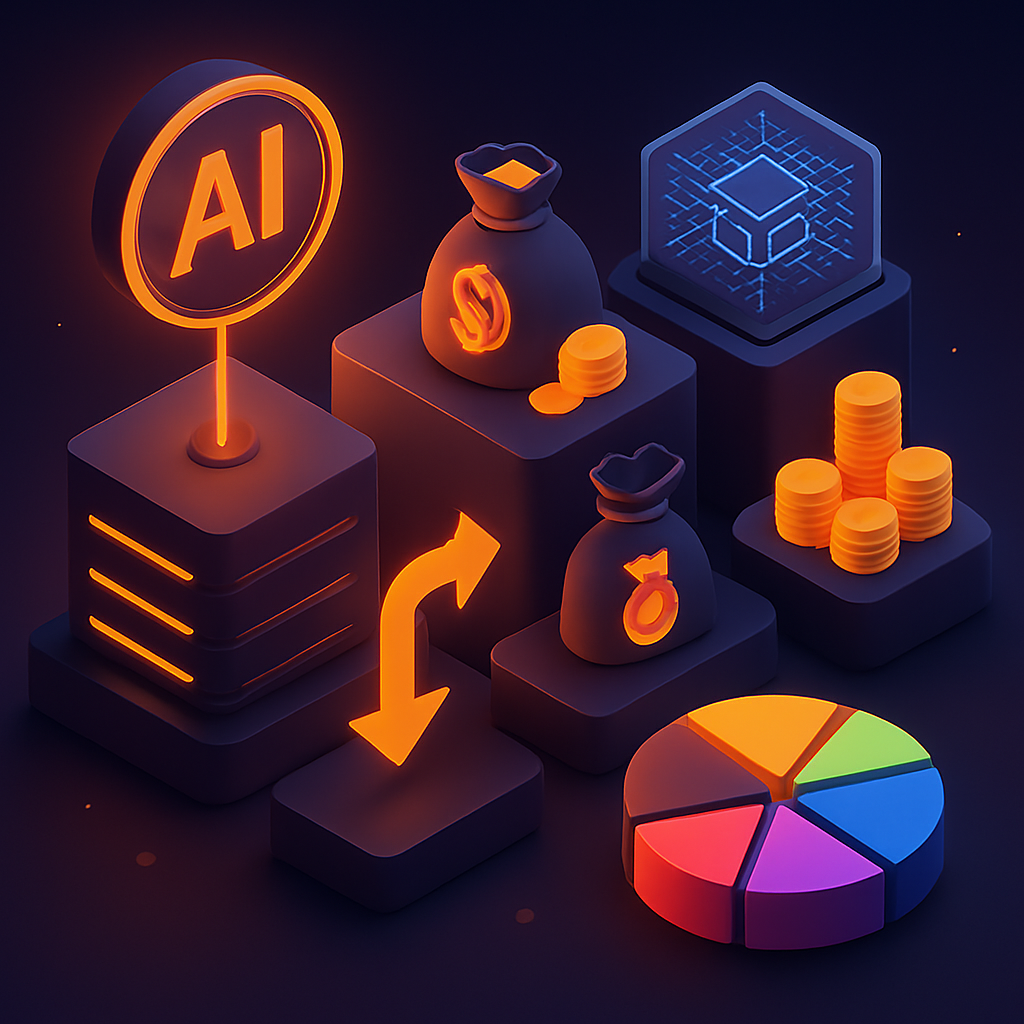Understanding IndoorAI’s Tokenomics Module: Sustainable, Incentive-Driven, and AI-Optimized

IndoorAI introduces an innovative and future-proof tokenomics model that seamlessly blends utility, incentive mechanisms, and economic sustainability. This structure not only aligns long-term interests across stakeholders but also leverages the power of artificial intelligence and GameFi to create continuous utility and demand for its native token – $IDA. Below, we break down the four core modules that make up IndoorAI’s tokenomic system and the token allocation strategy designed to drive ecosystem growth.

1. Burn-to-Yield Mechanism – Operational Engine
At the core of IndoorAI’s tokenomics is the Burn-to-Yield model — a mechanism that ensures the deflationary nature of $IDA while offering sustained yield to its participants.
- Whenever users top-up $IDA into the system, the tokens are immediately burned, reducing the total supply and creating scarcity from the beginning.
- This burn process activates the yield engine, which runs for a period of 5 to 7 years, offering steady rewards based on the amount burned.
- Unlike traditional staking or mining, this model removes the inflationary pressure caused by excessive token emission and offers long-term capital efficiency for users.
The brilliance of this design lies in its simplicity: it ties token utility directly to deflation and incentivizes holders through long-term passive rewards.
2. GameFi Integration – High-Risk, High-Reward Yield Loop
IndoorAI further amplifies token utility through an integrated GameFi loop, allowing users to earn additional yield by engaging in risk-based gaming or investment activities within the ecosystem.
- Participants can use their burned $IDA as tickets to enter high-yield speculative games and decentralized betting environments.
- If the user wins, they earn higher-than-average rewards. If not, the tokens used are permanently burned, further reducing the supply.
- This mechanism acts as a dual-layer burn incentive while ensuring constant token velocity and utility within the ecosystem.
With a model akin to a decentralized financial lottery loop, IndoorAI’s GameFi layer adds excitement, gamification, and a continuous deflationary push to the token economy.
3. AI Yield Management – Capital Allocation to Real-World Assets
The third module is perhaps the most groundbreaking: IndoorAI leverages its advanced AI capabilities to deploy user contributions into real-world yield strategies like:
- Stablecoin liquidity mining
- Blue-chip token investments
- Derivatives trading
- Yield farming in major DeFi protocols
By automatically allocating capital to these strategies through AI-backed decision making, the platform ensures that:
- Yield payouts remain sustainable and backed by real revenue rather than token emissions
- Token holders benefit from real-world profits
- The ecosystem maintains a balanced treasury for ongoing stability
This AI-backed investment module transforms IndoorAI from a speculative token project into a yield-bearing protocol backed by verifiable and diversified assets.
4. Treasury Protection & Dev Safeguards
To further enhance resilience and long-term growth, IndoorAI has established a robust treasury and development protection system.
- A percentage of $IDA tokens are held in the development fund, which acts as a buffer during adverse market conditions.
- These funds also support strategic buybacks, governance incentives, and funding new modules or partnerships within the IndoorAI ecosystem.
- In critical situations or during low-yield periods, treasury reserves may be used to top-up yield pools, protecting long-term stakers.
This structure ensures the sustainability of the ecosystem even in bear markets and reflects a commitment to investor protection and decentralized development.
Token Distribution Breakdown
The token supply of IndoorAI is meticulously allocated to balance growth, incentives, and ecosystem integrity. The breakdown is as follows:
- 45% – AI Ecosystem Reward: Dedicated to yield rewards through the Burn-to-Yield model and GameFi participation.
- 15% – Team & Advisors: Allocated to long-term contributors, with vesting schedules to prevent dumping.
- 10% – Liquidity Provision: Ensures deep market liquidity across exchanges and DeFi protocols.
- 10% – Marketing & Growth: Funds used to drive adoption, partnerships, and onboarding of new users.
- 10% – Public Sale: Distributed via launchpads or public offerings to incentivize early adopters.
- 6% – Reserve Fund: Emergency capital for treasury support, buybacks, or strategic pivots.
- 4% – Private Sale: For selected investors and strategic partners, likely with lock-up terms.
This allocation reflects a sustainable, well-balanced, and incentive-driven token economy that aligns interests across developers, early backers, and community participants.
Final Thoughts
IndoorAI’s tokenomics is not just about supply distribution – it’s a well-orchestrated system that aligns burn mechanics, AI-powered yield, and ecosystem utility into one seamless loop. From deflationary rewards to real-world investments, the system is designed to scale responsibly, reward participation, and remain resilient under market stress.
By uniting Burn-to-Yield, GameFi, and AI capital management, IndoorAI positions itself as a next-gen AI-driven financial layer — not only in crypto but in broader digital finance.
If IndoorAI successfully executes this vision, $IDA could become a benchmark model for sustainable token economies in the AI x Web3 era.


